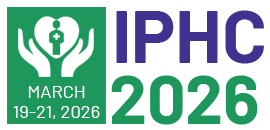Title : Effectiveness of Specific Self Static Stretching Exercise on improving leg movement among market vendors in Bangkok
Abstract:
Background: Prolonged sitting and standing can cause injury at back and leg muscle. It results in muscle discomfort, muscle fatigue and muscle pain that relate to back, legs and feet. The market-vendors must sit or stand at their shops for a long time for selling their products whole day. Thus, leg pain and suffering often occur in market-vendors. Although the stretching exercise is well-known for increasing muscle flexibility and reducing muscle pain in workers, the market-vendor group always ignore to perform due to their burdens. Easily exercise might be a strategy for changing their behavior. Specific Self-Static Stretching (SSS) Exercise is an easy program that can eliminate pain and help their movement. Therefore, the program was implemented to the market-vendor group.
Objective: This study aimed to determine the effect of Specific Self-Static Stretching Exercise on leg movement among the market-vendors in Bangkok.
Method: A quasi-experimental study with control group was used among 2 markets in Bangkok. Both markets are similar in term of the number of shops and type of market. Market A was selected as the intervention group while Market B was selected as the control group. Target population were market-venders aged 18 years and older. Visual analog scale (VAS), Chair Sit and Reach tests were used to assess the degree of muscle pain and leg muscle flexibility. Participants were market-venders who had muscle pain or muscle discomfort at legs or feet (VAS ≥ 3) or Chair Sit and Reach test showed poor muscle flexibility (≤ 5 cm.). A specific stretching exercise program was adjusted some posture to suite the need of the market-vendor group. It included 2 stretching exercise: Back of thigh stretch, and Calf stretch. The exercise protocol was move slowly to the end point of tightness, hold for 10 seconds, repeat 3 times, and perform 2 time in every day. This exercise program was conducted only in the intervention group by a physical therapist for the first month and then, the participants performed the exercise program for 3 months by themselves. The control group received only a leaflet about corrected postures for working. The Mann Whitney u test and Wilcoxon signed rank test were used for comparison before and after exercise program between group and within group, respectively.
Result: A total of 131 market-vendors (intervention group=56 and control group n=75) were recruited. Both groups were similar in baseline characteristics. After 4-month SSS exercise program, the degree of pain showed downward trend in the intervention group, but it was not different between groups. The intervention group showed significant increasing of right and left leg muscle flexibility (p<0.001, p = 0.04, respectively). And there were significant differences of right and left leg muscle flexibility between groups (p<0.001).
Conclusion: The SSS exercise can increase leg muscle flexibility among market-vendors in Bangkok. This exercise program is easy and suitable for the market-vendors group to perform continuously for improving their health. However, the limitation was this study collected data among market vendors only in urban area. So, this result might not generalize to other job sections or rural area.



